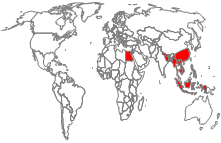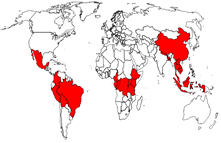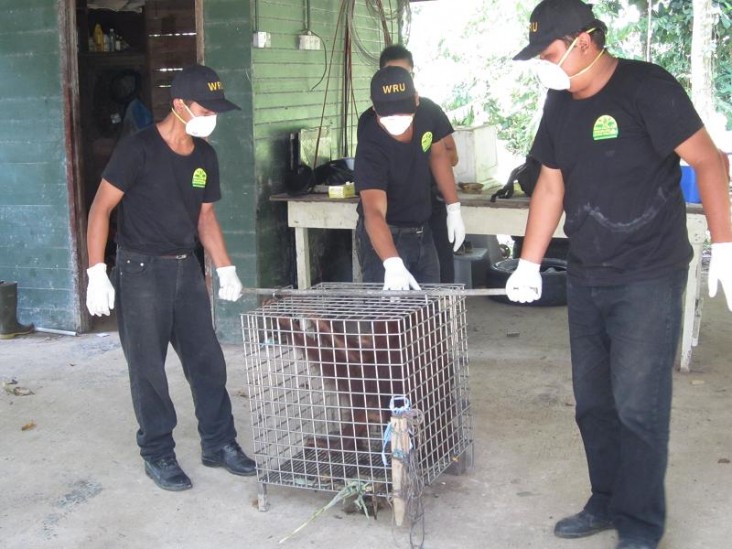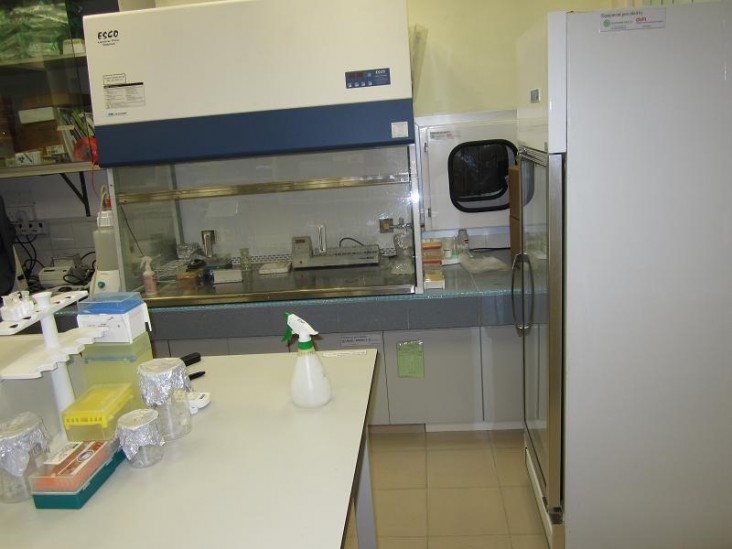The Emerging Pandemic Threats (EPT) program strengthens capacities in developing countries to prevent, detect, and control infectious diseases in animals and people with an emphasis on early identification of, and response to, dangerous pathogens from animals before they can become significant threats to human health.
Background
Nearly 75 percent of all new, emerging, or re-emerging diseases affecting humans at the beginning of the 21st century are zoonotic (i.e. originated in animals). Notable reminders of how vulnerable the increasingly interconnected world is to the global impact of new emergent diseases include HIV/AIDS, severe acute respiratory syndrome (SARS), the H5N1 strain of avian influenza, and the 2009 pandemic H1N1 influenza virus. The speed with which these diseases can emerge and spread presents serious public health, economic, and development concerns. It also underscores the need for the development of comprehensive disease detection and response capacities, particularly in “hot spot” areas such as central Africa, South and Southeast Asia, and Latin America where a confluence of risk factors may contribute to disease emergence.
Think Globally, Act Locally

The Pandemic Influenza and Other Emerging Threats (PIOET) Unit supports two major lines of work: H5N1 Avian Influenza, and Emerging Pandemic Threats.
H5N1 Avian Influenza: Since 2005, USAID has strengthened the capacities of more than 50 countries for monitoring the spread of H5N1 avian influenza among wild bird populations, domestic poultry, and humans, to mount a rapid and effective containment of the virus when it is found, and to help countries prepare operational capacities in the event a pandemic capable virus emerges. USAID’s efforts have contributed to dramatic downturns in poultry outbreaks and human infections, and a dramatic reduction in the number of countries affected; with five of these countries (Indonesia, Vietnam, China, Bangladesh and Egypt) as the primary reservoir of the virus.
Although these successes are significant, the H5N1 virus remains a serious threat and sustained vigilance is required. Mindful of the need for vigilance USAID continues its efforts to build on its successes and further consolidate its programs in the highest risk countries.

Emerging Pandemic Threats: As a complement to USAID’s work in H5N1, the PIOET Unit launched the Emerging Pandemic Threats program in 2009 to aggressively pre-empt or combat other diseases that could spark future pandemics. This second line of work is composed of four complementary projects operating in 20 countries —PREDICT, PREVENT, IDENTIFY, and RESPOND—with technical assistance from the U.S. Centers for Disease Control and Prevention (CDC). The EPT global program draws on expertise from across the animal and human health sectors to build regional, national, and local “One Health” capacities for early disease detection, laboratory-based disease diagnosis, rapid response and containment, and risk reduction.
At the country level, the EPT partners are working with governments and other key in-country and regional partners to enhance the understanding of viral distribution and key drivers of disease emergence—from deforestation and land use change to wildlife trade and livestock product demands. This information, along with other EPT investments to strengthen country-level capacities for routine infectious disease detection and outbreak response, will be used to improve surveillance and response as well as risk-mitigation strategies. These efforts will safeguard human and animal health and livelihoods in locations in Africa, Asia, and Latin America where new pandemic threats are likely to emerge.
Partners and Activities

PREDICT project: implementing partners are University of California-Davis, EcoHealth Alliance, Metabiota Inc. (formerly Global Viral Forecasting Inc.), Smithsonian Institution, and Wildlife Conservation Society with support from Columbia and Harvard universities.
PREDICT focuses on detection and discovery of zoonotic diseases at the wildlife-human interface. Specific activities include: strengthening surveillance and laboratory capacities in order to monitor wildlife and people in contact with wildlife for novel pathogens that may pose a significant public health threat; characterizing human and ecological drivers of disease spillover from animals to people; strengthening and optimizing models for predicting disease emergence and using this information to improve surveillance; and supporting outbreak response when requested.
PREVENT project: implementing partners are FHI 360 and Metabiota Inc.
PREVENT focuses on characterizing risks associated with disease transmission between animals and people and developing risk-mitigation strategies. Specific activities include: characterizing specific practices and behaviors (e.g. bushmeat hunting and butchering, raising wildlife for trade and consumption) that expose people to zoonotic diseases; and developing and deploying risk-mitigation strategies, including a tool for extractive-industry workers to decrease their exposure to emerging zoonoses.
IDENTIFY project: implementing partners are Food and Agriculture Organization (FAO) of the United Nations, World Health Organization (WHO), and World Organization for Animal Health (OIE). IDENTIFY focuses on strengthening laboratory capacity to safely diagnose and report common animal and human pathogens. Specific activities include: improving laboratory assessment tools to allow for better targeting of technical support and training; developing and rolling out training modules on diagnosing highly-infectious diseases; improving laboratory management practices related to biosafety and biosecurity; "twinning" labs with developed country labs; and expanding monitoring of antimicrobial resistance rates among priority bacterial pathogens.

RESPOND project: implementing partners are Development Alternatives Inc., Tufts University, University of Minnesota, Ecology and Environment, and Training Resources Group.
RESPOND focuses on pre-service workforce training and strengthening outbreak response capacity. Specific activities include: networking 34 schools of public health, veterinary medicine, and environment in both Africa and Southeast Asia to promote a “One Health” approach among future graduates; developing an outbreak response algorithm for health events where the cause has not yet been identified; and supporting outbreak response when requested.
CDC
USAID-funded CDC activities focus on pathogen detection as well as outbreak investigation and response. Specific activities include: strengthening surveillance and lab capacity; enhanced monitoring for zoonotic pathogens in people with frequent contact with wildlife; in-service Field Epidemiology Training Programs (FETP); and supporting outbreak response when requested. To further enhance coordination and link to CDC’s expertise, two CDC technical officers have been seconded to USAID to directly manage EPT projects focused on One Health, pre-service epidemiology training and laboratory capacity-building within the PIOET portfolio.
- Download PDF version of this fact sheet [PDF, 448KB].
----------------------------------------------
Go to the Emerging Pandemic Threats website for additional information.







Comment
Make a general inquiry or suggest an improvement.